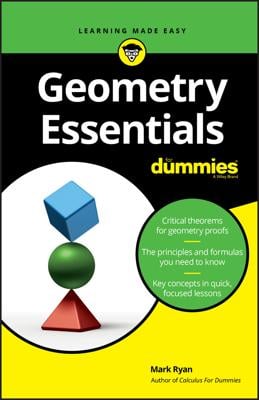Writing a proof is easier if you break it into two shorter, more-manageable pieces. First, you jot down or simply think through a game plan, in which you go through the logic of the proof with your common sense without being burdened by getting the technical language right. Once you've done that, the second step of translating that logic into the two-column format isn't so hard.
When you're working through a game plan, it's sometimes a good idea to make up arbitrary numbers for the segments and angles in the givens and for unmentioned segments and angles. You should not, however, make up numbers for segments and angles that you're trying to show are congruent. This optional step makes the proof diagram more concrete and makes it easier for you to get a handle on how the proof works.
Here's an example:And here's the proof diagram.
Here's one possible game plan for the proof: The givens provide you with two pairs of perpendicular segments; that gives you 90 degrees for angles BDE and BFE. Then, say congruent angles 1 and 2 are both 30 degrees. That would make angles 3 and 4 both equal to 90°–30°, or 60°. Next, because angles 3 and 5 are complementary, as are angles 4 and 6, angles 5 and 6 would both be 30 degrees. Angles 5 and 8 are congruent vertical angles, as are angles 6 and 7, so angles 7 and 8 would also have to be 30 degrees—and thus they're congruent. Finally, because angle 7 is congruent to angle 8, angle ABC is bisected. That does it. Now, you can transfer this information to your two-column proof.








